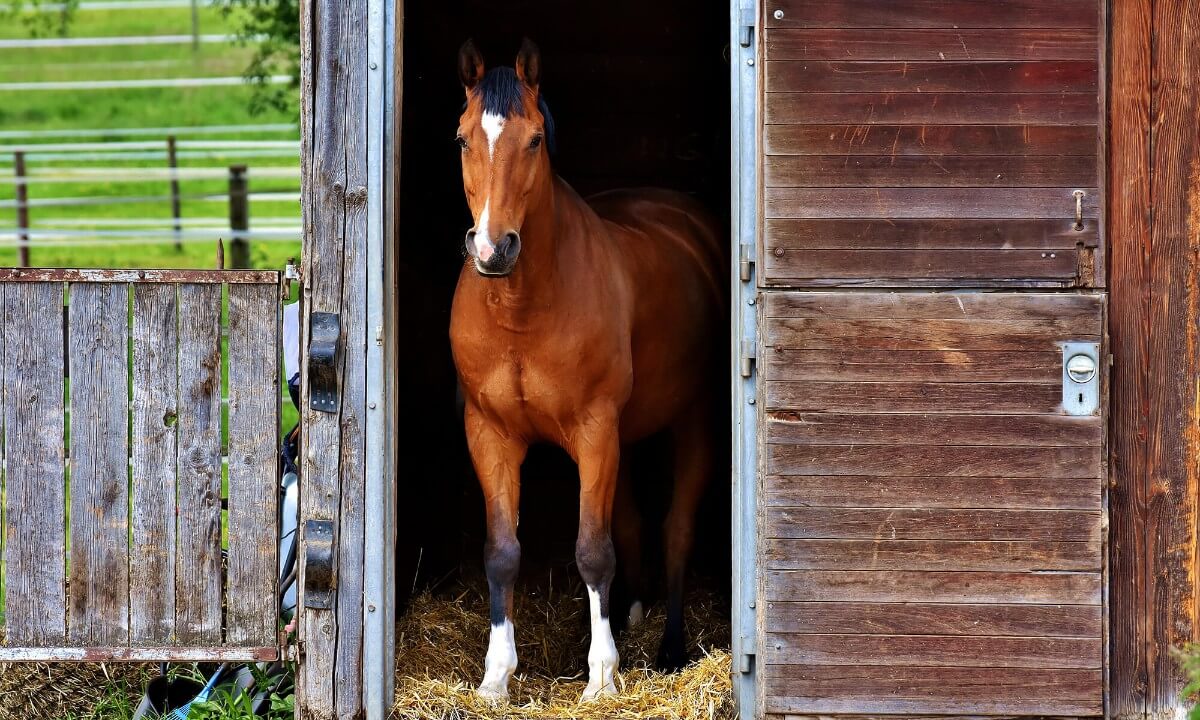AZOTURIA OR TYING-UP IN HORSES
• Azoturia is also known as Exertional Rhabdomyolysis (ERM), Tying-up, Set-Fast and Monday Morning Disease. ERM is a disturbance of the normal functioning of the muscles in the horse that causes painful cramps and muscle damage.
• ERM is most often seen when there is an imbalance between exercise and feeding. In some cases, it is caused by a genetic disease: polysaccharide storage myopathy (PSSM).
• Horses that are rested for a period of time after a regimen of work or exercise are more at risk of developing azoturia, especially if feed intake has not been reduced during periods of rest.
Causes of Azoturia:
• Altered carbohydrate metabolism in the horse or the overfeeding of non-structural carbohydrates
• Poor conditioning or fitness, sudden increase of workload
• The work of a horse after a period of rest, if the concentrate ration was not reduced
• Imbalance of hormones, including the reproductive hormones in nervous fillies and mares and thyroid hormones in horses with hypothyroidism
• Wet, cold, or windy weather conditions
• Hypotension / Nervousness
• Electrolyte imbalances – Horses which tie up during or following exercise frequently have electrolyte imbalances. These imbalances cannot be diagnosed with simple blood testing.
• Mineral deficiency (Ca, Mg, P, K and Se)
• Lactate build up
• Hypoxia to the muscles
• Vitamin E or Selenium deficiencies
• Dehydration
• Imbalance in Ca:P ratio
• Over exertional training and changes in it
• Genetic Inheritance
Build-up of Azoturia:
• Inadequate flow of blood to the muscles leads to the production of ATP anaerobically. It results into the build-up of acids, waste products and heat which alters the cell by preventing the cell’s enzymes from functioning.
• The damaged cell membranes allows the muscle enzymes and myoglobin to leak into the bloodstream.
• The glycogen that is not metabolized aerobically is then metabolized anaerobically, which then creates the cell waste products and heat. A horse on a high-grain diet with little work collects more glycogen in its muscles than it can use efficiently when exercise begins.
• Lactate acts as a fuel and used when the cell is suffering from hypoxia. It does not damage a cell. Lactate naturally builds up in an exercising horse without harming the muscle cells, and is metabolized within an hour afterwards.
• The inadequate blood flow to the muscle tissue leads to the pain which ultimately results into cell damage, and the release of cell contents.
Symptoms:
• Unwilling to walk
• Shortened, stiff stride behind
• Unsteady or stiff on hindquarters
• Collapses when trying to move
• Distressed behaviour such as excessive head throwing or pawing the ground
• Tachycardia with raised pulse rate
• Reddish-brown or coffee-coloured urine (from the breakdown of muscle tissue), frequent urination or frequent attempts to urinate
• Slight elevation in body temperature
• Firm, painful muscles over the loin and croup (lumbar and gluteal muscles)
• Excessive sweating and quick, shallow breathing
• Muscle spasm, twitching, or tremors
• Being reluctant to move or unable to move
• Lying down/unable to rise
Diagnosis:
• Based on signs and symptoms
• History and details of daily routines
• Feeding schedules and type of feed
• Physical examination
• Moderate to marked increased levels of the muscle enzymes, CK, AST and LDH are consistent with a diagnosis of ERM
• In severe cases kidney function should also be assessed and monitored using repeat blood samples.
• Urine analysis- for detection of the myoglobin pigments
• A muscle biopsy can be done from the muscles just to the side of the tail, the semimembranosus or semitendinosus muscles. The biopsy will determine if there are excessive proteins within the muscles.
• Histopathology- hyaline degeneration of the muscles
• In mild cases, an exercise tolerance test may be undertaken. This involves measuring muscle enzymes in the blood before and after exercise, suspect cases having an excessive increase in levels in response to exercise.
Dietary management:
• Provide the horse with water and encourage it to drink
• Inclusion of a minimum level of grain – High cereal grain diets can overload the normal digestive processes of the small intestine. It ultimately results in increased lactic acid production.
• Balanced vitamin and mineral levels – especially vitamin E and selenium since they act as an antioxidant and thus prevent the cell damage
• The correct amounts and ratios of the different electrolytes since they are very important in neuromuscular function
• Inclusion of oil: Oils provide a slow release of energy and maintain steady blood glucose levels. Blood lactate levels are lower in horses on high oil diets
• Good quality hay
• Supplements to lessen nervousness / stress such as Thiamine, Magnesium and Chromium
Exercise schedule:
This will vary between horses according to fitness, metabolic rate and individual variation, but several basic principles appear to be beneficial.
• Grading the level of exercise with a slow increase in intensity as fitness develops
• Hard work should be followed with a slow trot or canter to stimulate the delivery of oxygen to the muscles, and the removal of lactic acid from the muscles to the liver
• Adequate warming up and cooling down of horse
• Very gentle walking exercise, once the pain has resolved, can improve blood flow to the muscles, minimising scar tissue and muscle fibre adhesion formation
Dr. Akshay J. Wankhade M.V.Sc (Animal Nutrition) Fine Organics Industries Limited 8657580179

